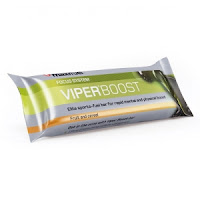Finding clothes that can be used both on and off the bike can be a hard task; if you are just nipping into town or work you don't want to be changing outfit when you arrive; but most clothing is rather impractical for the bike.
We all know the feeling of damp jumpers that ride up your back, or trousers that get caught in the chain and sodden wet when you splash through that apparently invisible puddle. Surely there must be some clothes that can work better than wet jeans and soggy tops for your ride to the supermarket or into work; clothes that won't make you look like you've just tumbled out of the washing machine for the rest of your day? Union34 produces just the kit... urban cycle wear that is discrete, yet distinctly functional and fashionable to ensure that your bike journey doesn't have to mean a rather rough-stuff appearance.
I've recently been testing out three of Union34's products; their Elements Soft Shell Hooded Jacket, Echo Packable Rain Jacket and their Elements Water Resistant Trousers. I've been very impressed by the thought-out features and practicality of the three items of innovative clothing.
The Elements Water Resistant Soft Shell Hooded JacketIt's raining. I've run out of milk, and the local corner shop is ten minutes cycle away - sometimes living on the Isle of Wight has its disadvantages. I needn't worry though; pulling on the Elements Soft Shell Jacket the rain is definitely less of a problem. I put up the hood, with it's innovative little padded peak and shove some change into the zippered rear back pockets before jumping on the single speed.
In twenty minutes I'm back in the house; still warm, still dry, with a fresh pint of milk and a box of eggs (they were a bit sketchy to carry back in retrospect). THIS is the kind of weather where the Elements Hoodie comes into its own.
The Elements Hoodie is made of Soft Shell material; wind-proof, water-proof and highly breathable, it is found in many out-and-out winter cycling jackets. The material is fleece lined, so provides a good amount of warmth in the spring air; whilst the lightweight hood with its little peak is very effective at keeping the weather out and the heat in. Union34 have clearly put a good bit of thought into this product, it is both comfortable to wear all day and practical on the bike.
The fit is snug, with elasticated wrists containing thumb loops, and an elasticated hem; it all helps to keep the warmth in. There are little features that really stand out to assure you this is a quality product as well; the metal togs on the drawstrings and strong zip for example, you can be sure that this top will put up with a fair bit of abuse. It comes in three colours as well; a smart black, funky green and trendy grey, there should be something to suit all tastes.
The Elements Hooded Jacket really is made to stand up to the elements then; with the British weather you'll never want to leave the house without it!
The Echo Waterproof Packable JacketEveryone needs a good packable waterproof jacket; whether you're a mountain biker and it's to stuff in your riding pack, or a tourer who needs something lightweight but waterproof for those unexpected showers, or a roadie heading out on an long spring training ride when clouds are looming in the distance. A coat that you can stuff in your pocket is a great bit of kit to add to your wardrobe, and it doesn't have to be a pvc plastic bag like so many packable capes are; certainly the Echo from Union34 falls a long way clear of that description.
Pulling the jacket out of its wrapping the material feels crisp, and the seams look strong; both signs that bode well for keeping the water out and the warmth in when you don this jacket in a downpour. The fit of the small size jacket that I have (I'm a 38 inch chest) is ideal; long arms and a good drop back, without too much excess material to flap around in the breeze. There are some neat features as well; small underarm zips that help to ventilate you, and a mesh back liner with full width vent strip to help avoid moisture build up. The wrists are elasticated and comfortably tight, and the hood, which rolls away into its collar is a nice feature to add a bit of extra protection.
Out on the road those features really prove their worth. The pit vents and mesh back vent are no gimmick, but are suprisingly effective at wicking away moisture build up, far better than any other packable jacket that I have tried to date. The material inevitably flaps a little in the breeze, but you soon overlook that when you realise how waterproof this jacket is; just take a look at the water beading up in the picture!
The roll-away hood and collar design is a great feature as well; take the jacket on a touring trip or a trip to the shops for example, and you can lock the bike up, take your helmet off and stay dry as you walk around town or set up your tent at a campsite.
The jacket comes in black or light green; black is a good choice if you are mountain biking and likely to be getting the jacket covered in dirt, as it will stay looking better for longer. However, if you are out on the road the green is probably a more sensible choice to keep your visibility up in the traffic.
This is without doubt one of the best packable jackets that I have used; it is light, very waterproof, breathable, fits well, and packs up small. There are some neat features, but the jacket has not been over-engineered to the extent that it doesn't fit into the "packable" category any more. If you are looking for protection from precipitation that is handy and effective, then the Echo should resonate well with you.
The Elements Water Resistant Trousers"Who needs cycling trousers?" I hear someone jeer as we discuss the new cycling kit that we have down at the pub; I must admit I was wondering the same thing... until I got a pair.
The Element Water Resistant Trousers are one of the new breed of cycling trousers that has taken cycling apparel to a new dimension; no longer do you need to be lycra clad to get to work across town, or alternatively arrive in sopping jeans with a oil mark down your inside leg and a slightly uncomfortable crotch from the abrasive stitching! Cycling trousers are there for the short distance commuter who doesn't want to get unnecessarily kitted up to ride just a few miles, but wants to arrive in style and comfort at their destination.
The more I use the Elements trousers the more I realise the virtues that they hold, they are not cheap at £99.99 a pair, but the engineering that has been put into the detailed design is impressive.
They are made of a smart cotton twill fabric, which will look very at home in the office; yet the fabric has been mixed with 3 percent spandex to give a comfortable amount of stretch for riding in. The water resistant element comes from a Swiss technology called 'nano-tech' which seems very effective at keeping the water out, without making the trousers feel at all synthetic. Your legs won't stay that warm if you are cycling in the wet for a long time, but the water soon runs off the fabric and they dry super fast; so sit yourself next to the radiator in the office whilst you slurp your coffee and by the time you've finished you'll have a dry set of slacks.
As with the other Union34 products, the thing that I really like about the Elements trousers is the little features; it is these that add the value. On the ankles for example, there is a concealed popper that brings the hem of the trousers together and successfully keeps them clear of the chain. For stashing your valuables there are three zipped rear pockets, including one large one that is plenty big enough for a mobile or wallet and is positioned so that you don't sit on it when you are on the saddle.
The trousers come in the very smart navy that I have and also a more casual grey. The fit is fairly straight cut, and I expect that a slim fit leg would be welcomed by some individuals; but Union34 still has plenty of time to come up with that as they expand their range, and certainly the navy straight cut is very worthy of the office and smart-casual environment.
Do you need a pair of cycling trousers? In my book it is increasingly looking like it. It is a very practical product; something that is durable and comfortable enough to wear on the bike, but smart enough to be seen around town in. In a nation where we are trying to get as many people cycling as possible, especially in our cities, it is these kind of products that will overcome the minor hurdles that currently stop people riding their bike short distances. A clever innovation that is one more step towards a cycling nation.
A Brief Note on SizingI usually take a Medium (38 inch chest) in most products, but opted for the Small in the Elements Hoodie as the size chart indicates that this should cater for 37-39 inch chests. The hoodie is a little tight under the arms and across the back, but seems to have stretched out quite nicely with use. The Echo Jacket in size Small fits perfectly.
For the Elements trousers; I am normally 32R in trousers, so opted for the 32 Long, as the regular is displayed as only having a 31" leg; the leg length as a result is a little on the long side, but perfectly manageable, the waist is rather too generous for a 32 in my opinion. If in doubt, I recommend trying the Union34 kit on in one of their retailers, which can be found
all over the country, it is worth getting the most of these great products.








































